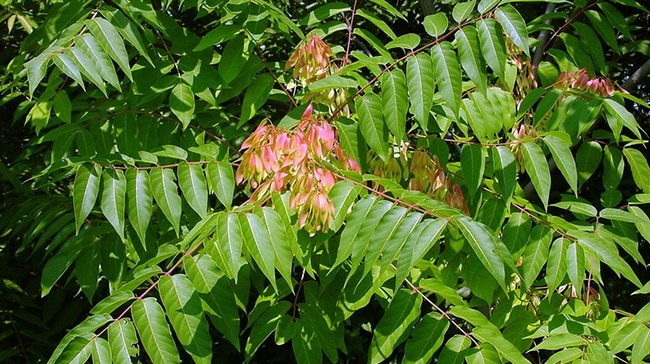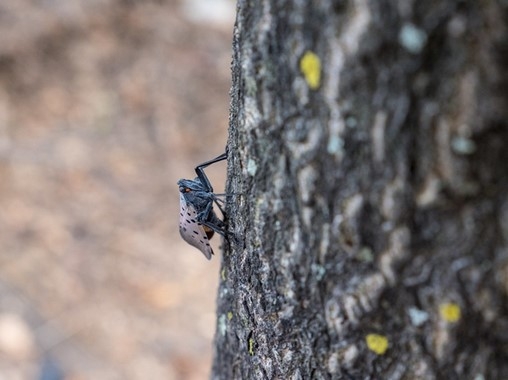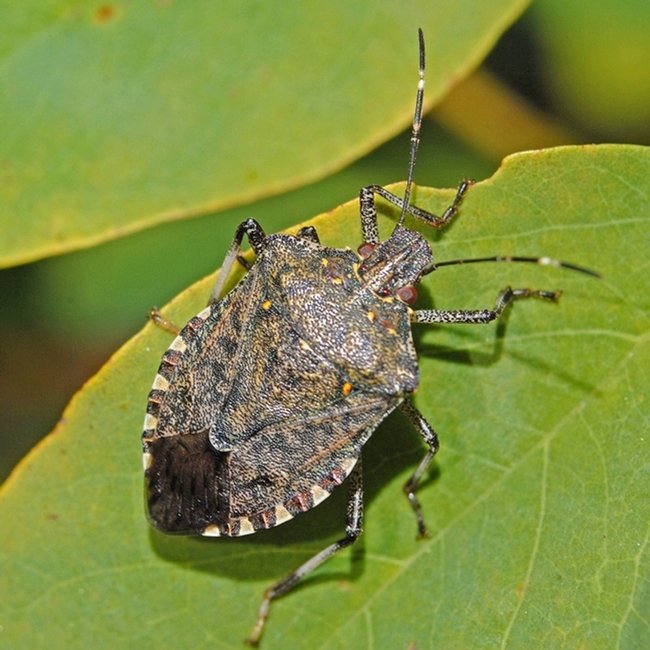UC Master Gardeners across the state are on a scouting mission for the California Department of Food and Agriculture (CDFA), combing their communities and the local countryside to find the undesirable but common tree-of-heaven.
In contrast to its angelic name, tree-of-heaven is a noxious invasive plant that was introduced during the Gold Rush by Chinese miners who valued its medicinal properties. It is also the preferred host plant for two damaging exotic pests, the brown marmorated stink bug, already found in parts of California, and the spotted lanternfly, a leafhopper from China that officials want to keep out.
Spotted lanternflies were first detected in the U.S. in 2014 in Pennsylvania. They have since been spreading and are already found in 17 states, as far west as Illinois. Spotted lanternfly poses a significant threat to California agriculture and its natural areas, so CDFA is being proactive, organizing an effort to reduce the number of the pest's favorite host plant, tree-of-heaven.
Tree-of-heaven is found in 39 California counties, including Fresno County. It is a deciduous tree that can reach 75 feet in height with a 12-inch diameter near the base. It has smooth bark that resembles cantaloupe rind and compound leaves that contain dozens of leaflets. The tree tolerates unfavorable growing conditions on every type of topography in California below the 7,000-foot elevation. It is not an easy tree to eradicate. When cut down, it resprouts readily, creating even more trees in dense stands.
“CDFA has funding for elimination of tree-of-heaven,” said Missy Gable, director of the UC Master Gardener Statewide Program. “They need to know where the trees are located so funds can be allocated to local agencies for removal. With UC Master Gardeners' extensive training and statewide reach, they are uniquely equipped to support the project.”
More than 6,000 volunteers across the state are trained and certified UC Master Gardeners. They are dedicated to educating the public on sustainable gardening and being involved in environmental stewardship in their communities. About 300 Master Gardener volunteers have been trained to identify tree-of-heaven by assessing the bark, leaves, flowers and seeds. Using a simple online scouting tool, they will record the locations, number of trees in the stand, and the approximate diameter of the largest tree at breast height. The tool generates a map that can be used by researchers, CDFA and local public works officials to prioritize trees for removal.
If you would like more information on joining the UC Master Gardener scouting project you can watch the informational webinar here.
This article was originally posted on the UC Master Gardeners of Fresno blog.


